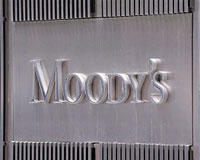The loan books of the UK’s six biggest real estate lenders are in good shape to resist an economic “worst-case scenario” according to a stress test undertaken by Moody’s.
The ratings agency has predicted that the banks would have to take a £12bn loss from commercial real estate in such a scenario but that their tier 1 capital – the cash that banks have to keep back to offset potential losses when issuing loans – would be only minimally impacted.
Banks’ commercial real estate losses during the global financial crisis had a major impact on the UK’s broader economy.
Lenders being in a more resilient position now ahead of any potential downturn will be a relief to the industry and the Bank of England, which regularly undertakes its own stress tests in order to ensure the industry is not posing a major risk to the economy.
According to Moody’s, RBS and Lloyds would be the hardest hit, with losses of £4.1bn and £3bn, while HSBC would lose £1.7bn.
With the smallest commercial property portfolio at £3bn, Nationwide would suffer a fall of £0.4bn.
Despite a combined loss of 14% of banks’ exposures, Moody’s said tier 1 capital would hardly be affected.
The level of capital classed as tier 1 at RBS would fall from 15.4% to 13.7% compared to the loans it has outstanding. Lloyds would have a fall from 15.4% to 14.1% and Nationwide’s ratio would be 25%, down from 26.1%.
Andrea Usai, senior vice president of Moody’s, said: “Banks have better-quality capital. Over time, they have reduced the actual real estate exposure and risk appetite for the sector as a whole, particularly for the riskier subsectors of commercial real estate.”
Peter Cosmetatos, chief executive of Commercial Real Estate Finance Council Europe, said: “If you squint at it from a distance, it looks like the impact on capital is marginal.
“Yes, they’ll suffer losses, but they’re plainly losses they can afford to take, which is how it should be. It’s not immune, but it feels resilient.”
In July the Bank of England reported that banks’ leverage in the sector had fallen by a third from pre-crisis levels. Meanwhile, the six biggest lenders have cut their portfolios by 39% since 2010, from £138.9bn to £84.6bn.
How does Moody’s stress test work?
How does it affect the UK’s biggest banks?
| Barclays | HSBC | Lloyds | Nationwide | Santander UK | RBS | |
|---|---|---|---|---|---|---|
| CRE exposure 2016 (£bn) | 12.3 | 12.8 | 20.3 | 3 | 10.9 | 25.3 |
| Capital loss in stress test (£bn) | 1.5 | 1.7 | 3 | 0.4 | 1.2 | 4.1 |
| Percentage loss | 12% | 13% | 15% | 13% | 11% | 16% |
What is it?
Moody’s stress test imagines a worst-case scenario for the six biggest UK lenders to see how it affects their capital levels over two years. Andrea Usai, senior vice president of Moody’s says: “Severe stress tests are not a prediction. They’re hypothetical and can be as severe as you’d like.” In their hypothetical situation, the UK is in a recession. Although the agency does not say how much values are envisaged to have gone down, Usai says it would not be as much as the 45% fall posted during the financial crisis.
How are losses calculated?
In the worst-case scenario, Moody’s assumes that the banks will lose 30% on average of the amount issued on each loan if a borrower defaults. This is known as the “loss given default” and assumes that the worst-case fall will not be as sharp as after the financial crisis when average LGD was 35%. The agency then uses each of the bank’s proportion of non-performing loans on its books over the past two years to assign them an individual probability of exposure to defaults.
• To send feedback, e-mail karl.tomusk@estatesgazette.com or tweet @ktomusk or @estatesgazette











